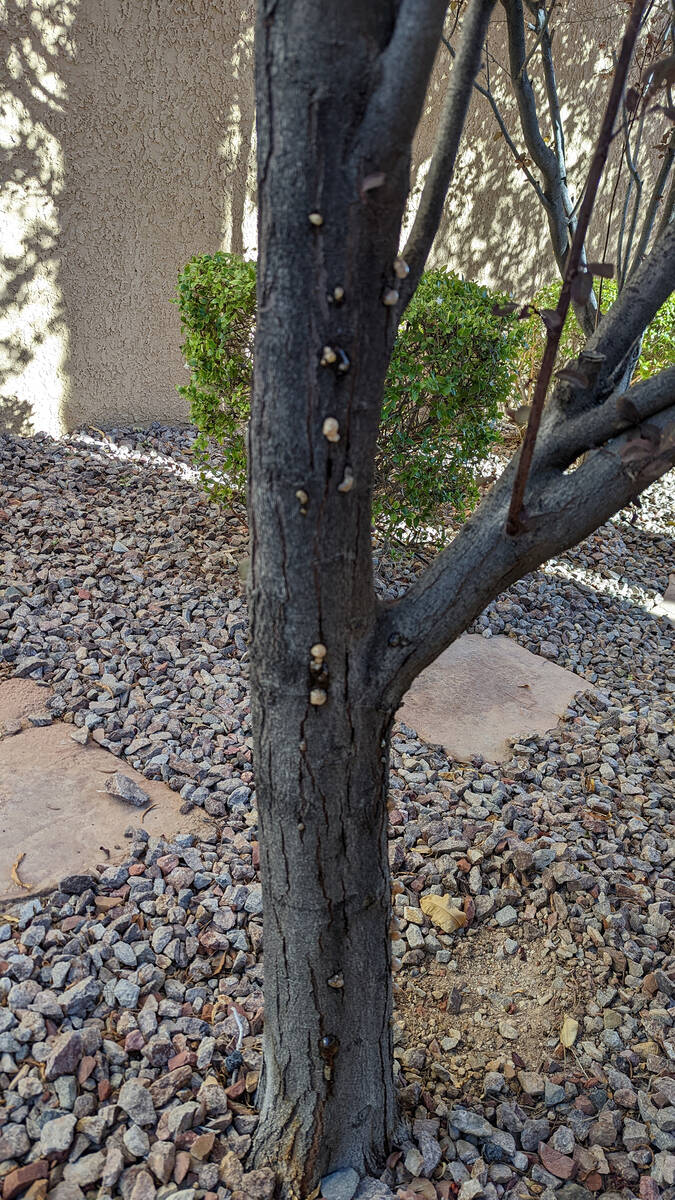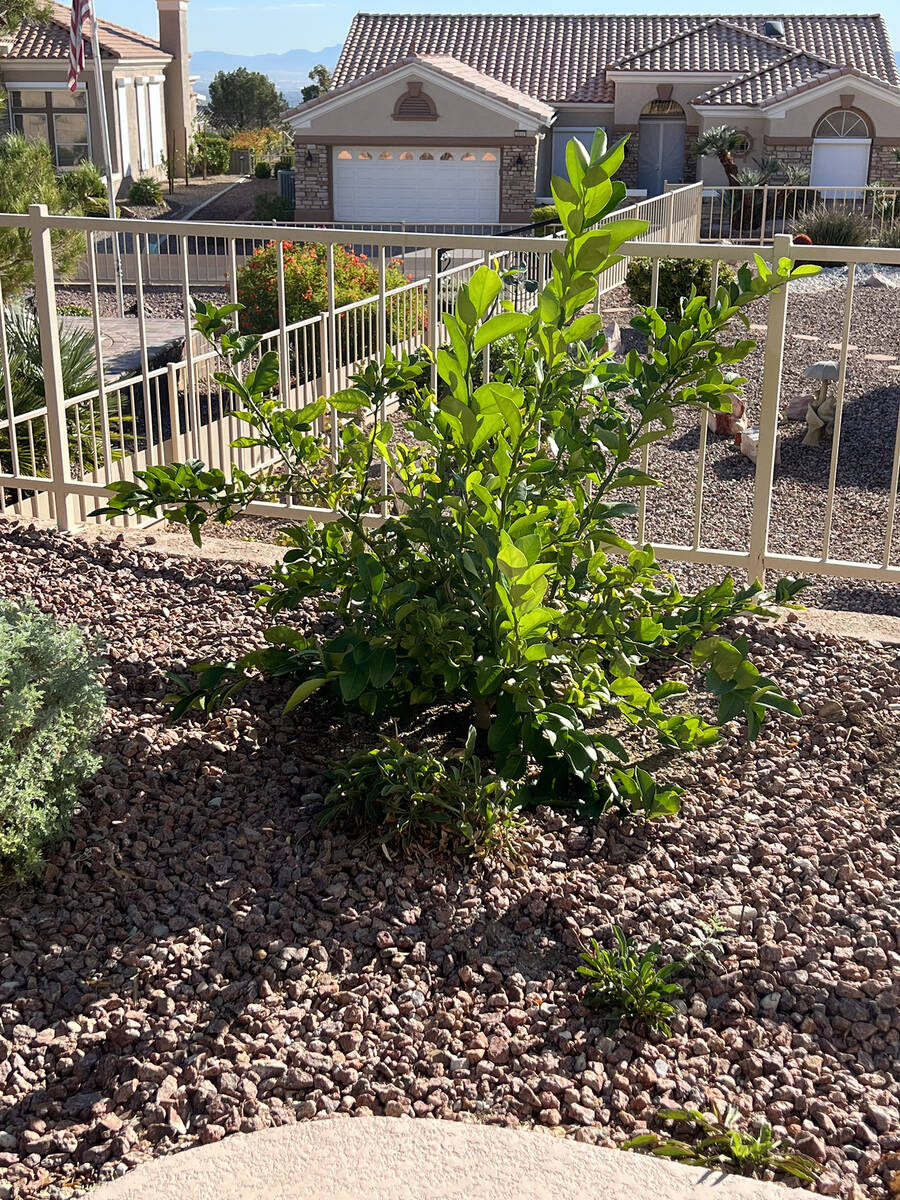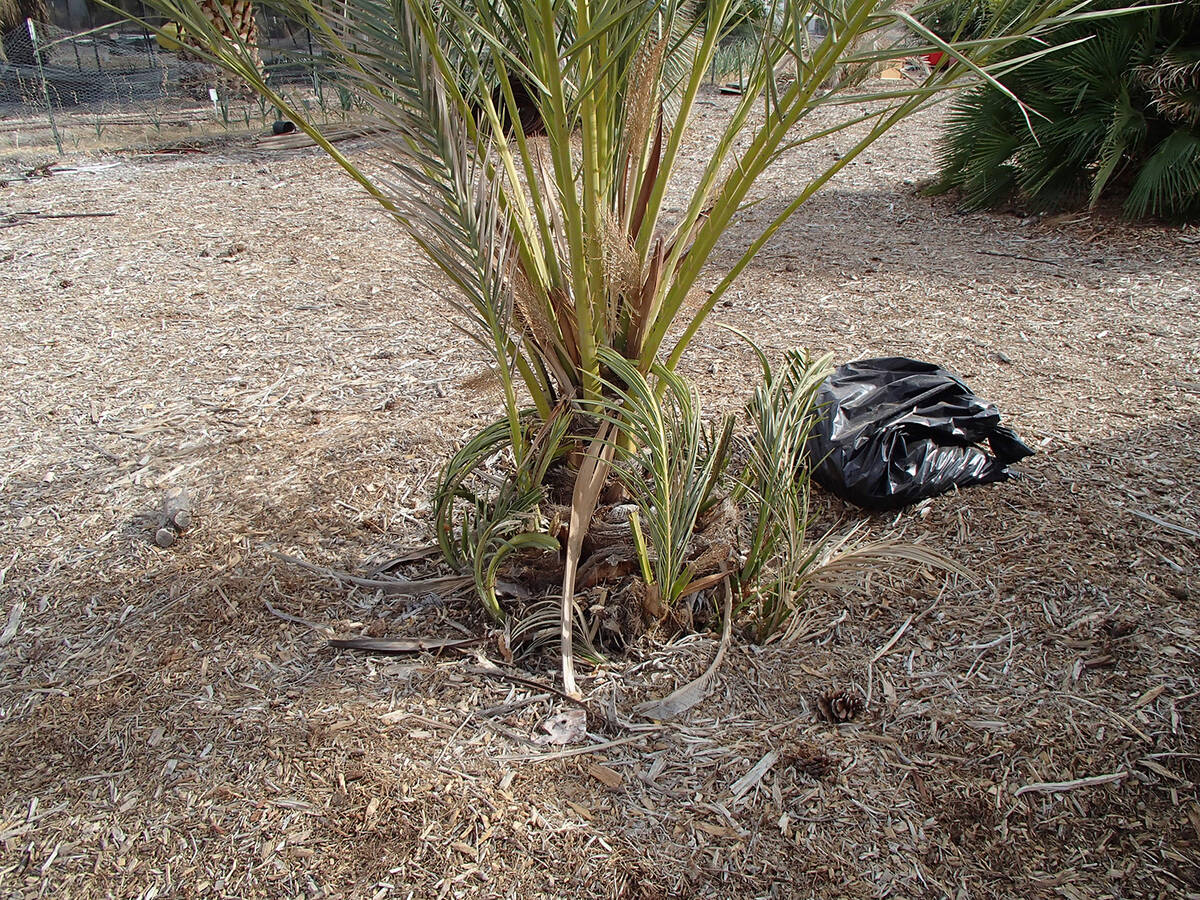Tree roots will follow easiest path to water
Q. Recently our neighbors converted their front lawn to artificial turf. The trees were getting some good moisture from their grass, and now they won’t. The other two sides of the trees are on the street side and the driveway side. Will the trees start to deteriorate?
A. Most likely. Tree roots are lazy. They grow best where water is easiest to get. And tree roots absolutely love fertilizer. Bingo! Your neighbor’s lawn, if it’s close enough, gave your trees water and fertilizer because that’s what a successful lawn needs.
If you want to judge where tree roots grow in naturally high rainfall areas, visually lay the tree on its side and spin it in a circle. Tree roots have the potential to grow anywhere in that circle to about twice the height of that tree. But they don’t in the desert. Tree roots follow water irrespective of walls, fences or boundary lines. They like it even better if this water has fertilizer in it.
If a source of water is within 10 feet of a tree, then tree roots will be in it. If the plants flourish when watering every day, then tree roots will love it regardless of whether it is in your neighbor’s yard or not.
Tree roots may be stopped or diverted with a root barrier. Sometimes they work and sometimes they don’t. Cutting roots repeatedly into that area can also work and may be a better solution if water is applied elsewhere.
Q. I have a 16-year-old Mexican fan palm. This past spring, I noticed that all the fronds dried up and eventually died. A YouTube video showed a professional cutting off about 1 foot from a tree each time until he eventually reached some green areas and said the tree was still alive. A few weeks ago, I cut about 1 foot off the top to look for some green, but nothing was there. Will this tree grow again like in the video?
A. Tree types all grow differently. I don’t know what kind of tree was in the YouTube video. If it’s a palm tree type, like a Mexican fan palm, then it depends on whether your palm tree produces suckers from its bottom area or not. Some trees sucker easily, and others do not. If the professional was right, then this was a tree that suckers easily. Some palms like Mediterranean fan palm and date palm produce suckers from their bottom area, and others, like most Mexican and California fan palms, do not.
My guess: If it is a Mexican fan palm, it will not grow from the base (produce suckers) regardless of how much green you find in the trunk. You can cut or prune off your tree 1 foot a time and it will always be dead. Growth always comes from the central bud at the top (where you saw fronds growing). How, when and where different plants sucker is a basis for asexual propagation (producing new plants without plant sex and keeping them all identical). There are pluses and minuses for suckering but that is the topic for another question.
Be careful of YouTube videos. Sometimes they give bad advice. And sometimes they give great advice. Why do some trees sucker and others do not? In many cases it is a response to their former environment (such as animals chomping on them, fire or flooding).
Q. I planted this Meyer lemon in February. It’s growing a little wild. Do you have any advice on pruning it? I was going to wait until February. I want it to have a good structure. Any advice is appreciated.
A. Be very careful of strong sunlight when you prune it. It is not a desert plant. It comes from the tropics. It is a semi or subtropical plant that prefers a good soil and water. They hate the hot, strong, desert sun. The trunk and limbs will scorch if the sun shines on the trunk and stems for more than a few minutes during the summer.
Whenever you prune citrus, the trunk and limbs may scorch from the sun if the canopy is opened too much. Whatever you do, leave as much shade on the limbs and fruit as possible.
Start pruning from the bottom of the tree and remove only limbs, or limbs with leaves, that touch the ground. Do this when you can find the trunk. Remove limbs that are too close together or that heavily shade each other. Usually, the origin of these limbs is closer than about 12 inches apart.
I hope you like Meyer lemons. You will get a bunch of them as it gets larger. But the fruit exposed to direct sunlight may scorch until they are at least partially hidden by leaves.
Q. I just noticed these trees on the west side of my house. I don’t know what they are. There are “bubbles” coming from the trunk. Can you please tell me what they are and how I can care for them?
A. The tree you noticed is an ornamental plum. They are an old-fashioned fruit tree that can look pretty in a landscape. There are basically two types: some with red leaves all season long and some that are red when young but turn green as they get older. The kind with red leaves all season long is called the red-leafed ornamental plum. It is basically a plum tree.
Those “bubbles” are from sap oozing from the trunk most likely due to injury from the sun. The trunk overheated from the sun shining directly on it for a long period of time. In fact, we call it sunburn. You can find them on the sides of plums when there is some sort of damage of any kind. In the case of peach, they are 99 percent associated with borers. In plums, it may have a 50 percent to 75 percent chance they are associated with borers.
Prevention is the best policy. Keep them bushy. Do not let these trees develop an open canopy that allows direct sunlight to shine on them for more than a few minutes. Keep them watered and fertilized so they maintain a dense canopy. Be careful of direct sunlight shining on the trunk when the tree is young. As the tree gets older the trunk can better handle direct sunlight.
Plant them in an open area of the yard where the tree can get plenty of air movement, which helps it stay cooler. Amend the soil at planting time. After planting, if the soil is covered in rock, then rake it back annually and apply a thin layer of wood chips to the soil surface. Water it in. Then rake the rock back.
When you see “bubbles” on the surface of the trunk then some sort of damage has occurred near that area. You don’t know if the damage was done by borers or the strong sun. It is best to treat the tree if you plan on keeping it and want it to improve. Apply a borer-controlling insecticide around the base of the tree as a drench. Do this after it flowers in the spring. Follow all labeled directions.
Q. I just bought a seedless Mandarin “Tango.” I want to plant it in the ground. I want to plant it where I have another tree I am going to replace. What care do I need for successful planting and growing?
A. All citrus are tropical trees and need soil improvement, irrigation and protection from direct sunlight on the trunk and main limbs. East or north sides of the house are best. If you can’t do that then pick a cooler spot in your landscape. Plant it at least 5 feet or more from a hot wall (wall facing south or west usually).
Dig the planting hole before you buy the tree. If the soil was covered in rock (desert landscaping), the soil usually needs to be improved (amended) at planting time. Mix into the soil enough compost or soil amendment to change the color of the soil to a milk chocolate color. This can be up to about 25 percent to 30 percent compost or soil amendment to change its color. Add fertilizer to this amendment if it is not rich to begin with.
Ask the vendor or get help if it’s not known how rich the soil is. If it is rich to begin with, do not add fertilizer.
Buy the tree in either a 5- or 15-gallon container. Buy a tree with the limbs as low as possible on the trunk. Its height is not important. Shrubby is OK. You want the trunk shaded, with a dense canopy above it. It is easier to remove branches (if needed) than shade the trunk because the tree is limbed too high.
Dig the hole for this three times the width of the container and not any deeper than the container. Plant it with lots of water. You should see air bubbles in the hole when planting. Keeping the soil wet is OK for a couple of days.
If the tree is a 5-gallon, then it should get about 5 gallons of water each time you water. Fifteen-gallon tree should get about 15 gallons of water each time. As it gets bigger, add emitters to add more water. Don’t add minutes to the timer to give it more water or everything else on the same circuit will get more water.
Cover the soil with wood chips (best). If you must plant in rock, then use big rock so you can easily add organics (compost or planting mix) to the soil every two or three years. If you use small rocks, then the rock may have to be racked back, then the compost/planting mix applied to the soil surface, and the rock raked back. Your call.
Stake the tree to immobilize the roots if it is 15-gallon or larger. Protect the tree with chicken wire if there is a problem with vermin.
Bob Morris is a horticulture expert and professor emeritus of the University of Nevada, Las Vegas. Visit his blog at xtremehorticulture.blogspot.com. Send questions to Extremehort@aol.com.











